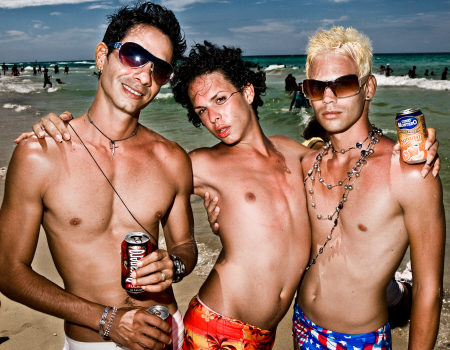Born in Havana, Cuba in 1974, Alejandro González learnt photography in workshops directed by photographers like Diego Goldberg, Luis González Palma and Edgar Moreno. He later won a residency at the Cologne Academy of Media Arts in Germany. In 2009 he was awarded the Cuban Casa de las Americas prize in the photography section. His work has been exhibited in Cuba, as well as Mexico, the United States, Spain and Italy.
González envisions photography as necessarily documentary. Even more so today, at a time when he, like the rest of his generation, is watching the world he was promised as a child disappear, and witnessing the emergence of a new generation completely different from his own. So he documents, by building rigorously thought-out, meticulously edited series. Using a mutedtone approach, González observed plants rescued from concrete, clinging onto crumbling walls, emerging laboriously through asphalt, as a metaphor for a complex day-to-day life. Then, borrowing his aesthetic from 1970s Soviet magazines, he revisited his city, from Lenin Park to the monumental embassy of a country that used to be Cuba’s brother – a world intended as a foretaste of a Socialist victory. Nowadays rust and weeds have taken over the dream. A few families come on Sundays to picnic. The new generation has appeared on the Malecón [seafront] and in town, eager to invent a different nightlife, with a new style and a new energy. González captures them in square frames, using a flash, creating a gallery of effective, truthful, non-judgmental portraits.
He does not wish to judge, only to document: which is what he did with the gay community in the series he is presenting at Photoquai. On 17 May 2008, during the second Cuban celebration of the International Day Against Homophobia, he shot thirteen tightly framed colour portraits of homosexuals and transvestites. On 17 June of the same year, on the openly gay beach Mi Cayito, he watched the first Gay Pride participants play before his lens, under police surveillance.
Christian Caujolle, curator
Text from the catalogue-book “Photoquai”, co-edited by Musée du Quai Branly- Actes-Sud
















